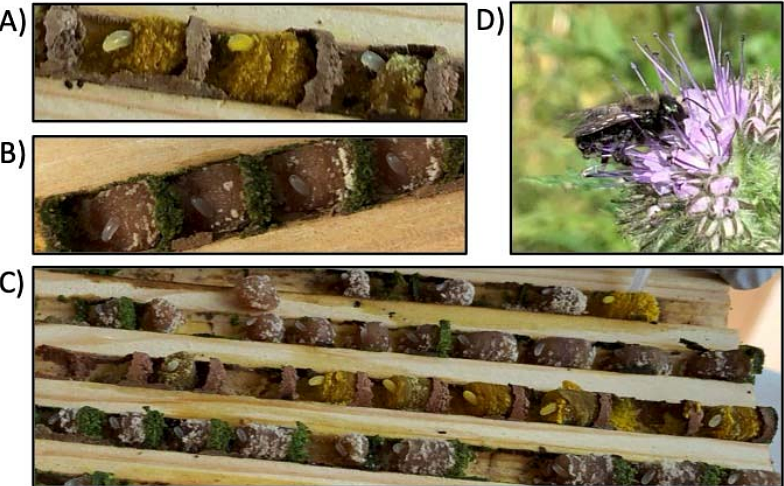Pollen diet, more than geographic distance, shapes provision microbiome composition in two species of cavity-nesting bees

Pollen diet, more than geographic distance, shapes provision microbiome composition in two species of cavity-nesting bees
Vannette, R.; Williams, N.; Peterson, S.; Martin, A. N.
AbstractThe microbial composition of stored food can influence its stability and determine the microbial species consumed by the organism feeding on it. Many bee species store nectar and pollen in provisions constructed to feed developing offspring. Previous work has shown variation in provision microbiome among bee populations, yet whether this variation is determined by the pollen types within provisions, variation between bee species at the same nesting sites, or geographic distance was unclear. Here, we sampled two species of co-occurring cavity nesting bees in the genus Osmia at 13 sites across the Sierra foothills in California and examined the composition of pollen, fungi and bacteria found in their provisions across sites. As expected, pollen, bacterial and fungal composition exhibited significant turnover between bees and sites, with bee species characterized by particular pollen and microbial species. Pollen composition explained 15% of variation in bacterial composition and ~30% of variation in fungal composition, whereas spatial distance among sites explained minimal additional variation. Symbiotic or bee-specialized microbe genera Ascosphaera, Sodalis and Wolbachia showed contrasting patterns of association with pollen composition, suggesting distinct acquisition and transmission routes for each. Comparing provisions from both bee species comprised of the same pollens points to environmental acquisition rather than bee species as a key factor shaping the early stages of the bee microbiome in Osmia. The patterns we observed also contrast with Apilactobacillus-dominated provision microbiome in other solitary bee species, suggesting variable mechanisms of microbial assembly in stored food among bee species.